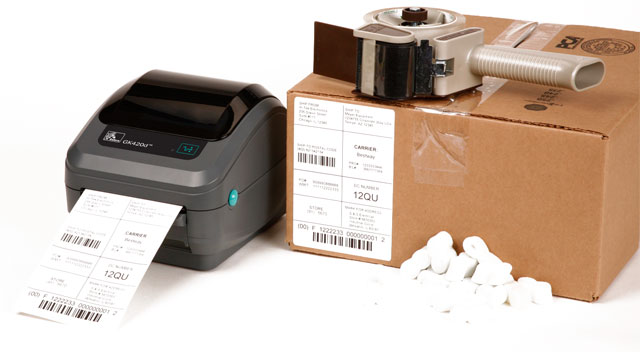Tech Tip Tuesday: What Do I Need To Print Out My Barcodes?
 Following up on the last tech tip Tuesday, now that you have figured out how to get your own barcodes it is time to print them out. So what do you need to print out the barcodes?
Following up on the last tech tip Tuesday, now that you have figured out how to get your own barcodes it is time to print them out. So what do you need to print out the barcodes?
Barcodes.
First, you have to design and create the barcodes in a barcode software. A few that we suggest is Bartender by Seagull Scientific, Nice Label, or Teklynx. These software allow you to design your label and barcodes to hold the info that you need.
The next thing you have to do is to choose a printer that suitable for your need. Below are the printer size we recommend, depending on how many labels you print out in a day and what size do you want your labels to be.
Printers.
Direct Thermal– chemically treated label is heated directly (short-term life on label) Usually used on shipping packages.
Thermal Transfer– ribbon ink is transferred onto the label (will stay on longer on label) Usually used on warehouse/retail store racks.
Desktop Printer– This type of printer, like the GX420t, is made for small volume applications. Usage is suitable for about 300-500 labels per week. It is perfect for asset labeling in an office or light printing duties at a retail store.
Industrial Printer– It is larger and more rugged than desktop models for high volume print applications, like the Datamax I-4212e. Usage is suitable for printing thousands of labels per day. It is great for manufacturing and distribution centers as well as large retailers.
Mobile Printer– This type of printer provides mobility to users, like the Zebra QLn320. It’s small existence allows users to print on the go and perfect for delivery drivers and field workers to create label or receipt.
If you have any questions about what kind of software and printer that you should use, feel free to contact our dedicated account managers and they will be able to provide you with the best solution for your application.
Honeywell’s Dolphin CN80: The Best of Both Worlds
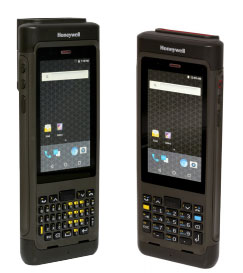 Many logistics, warehouses, and field mobility organizations are in the middle of a transition. They are going from a keypad-centric mobile device to a full touchscreen device. The problem, keys are still essential for data capture for many of these organizations.
Many logistics, warehouses, and field mobility organizations are in the middle of a transition. They are going from a keypad-centric mobile device to a full touchscreen device. The problem, keys are still essential for data capture for many of these organizations.
Luckily, the ultra-rugged Dolphin CN80 can help bridge that gap. With a large 4.2 inch vivid color touchscreen and the option to choose between numeric or QWERTY keypads, users will be allowed to select the best input method for their everyday environment. At the same time users will learn how to use the touchscreen for touch-centric applications in the future.
Honeywell’s Dolphin CN80 features fast data processing, 1D/2D scanning, advanced network connectivity, and a battery life that lasts twice as long as the previous generations. Allowing users to be connected and productive throughout multiple shifts. Having the hybrid of keys and a touchscreen allows users whom wear gloves or users whom are accustomed to working a certain way to feel comfortable with the device they are using on a daily basis.
Features and benefits:
- Mobility Edge Hardware and Software Platform: Common hardware and software platform delivers enhanced operational efficiency and reduced TCO. Deploy the same applications on multiple products across your enterprise.
- Forward-Compatible, Future-Proof: Support for four Androd generations – N through Q. Customers using Windows based operating systems can migrate to Android without sacrificing reliability, performance, or management features.
- Unparalleled Scanning Performance: Enhanced 1D/2D scanning/data capture with read ranges of 0.15m to 15.2m (6in to 50ft) typically required in today’s warehouses. Optional scan handle for flexibility to switch between handheld and pistol grip operations.
- Rugged, Ergonomic Design: Designed to withstand the harshest environments and the toughest users, the Dolphin CN80 minimizes downtime and lost productivity with extreme longevity. Withstands 2.4m (8ft) drops and 2,000 1.0m (3.3ft) tumbles. IP65/IP67 ratings against dust/water spray. Cold storage and non-incendive options available.
- Long Battery Life Drives Productivity: Long shifts, extended talk-times, and heavy GPS usage are no match for the Dolphin CN80. Long battery minimizes workflow interruptions and drives efficiency.
Zebra Printhead Program: Free Printheads for the Life of Your Printers

Join the Zebra Printhead Protection Printhead Program to eliminate replacement costs in your operation!
If you agree to use genuine Zebra supplies exclusively with Zebra printers, all your failed printheads will be replaced at no charge!
Benefits of this Program:
- Eliminate downtime to increase productivity
- No unpredictable printhead replacement costs
- Convenience of a one-source supplier for all your media needs
- Lower cost of operation and ownership
High- Quality Zebra Supplies Provide Consistency and Reliable Performance.
With more than 1,000 combinations of high quality and reliable labels, tags, wristbands, receipts, and ribbons, Zebra can meet the durability requirements of most printers. The Printhead Protection Program will reward you for using genuine Zebra labels with free printhead replacements.
How to Enroll? Enrollment is Easy!
Contact our dedicated account managers and we will show you how to get started!
*Excludes mobile, card, and kiosk printers.
Tech Tip Tuesday: How To Barcode Your Product
To barcode your own product, there’s a few steps you should follow. First, determine if you need an unique barcode number for your product. If you do, follow the steps below to learn what you need in order to get your product out the door. Once you have the barcode, contact one of our dedicated account managers to find the printer and supplies that’s suitable to your need and get started on printing your own.


QR Codes and Medicine Collide
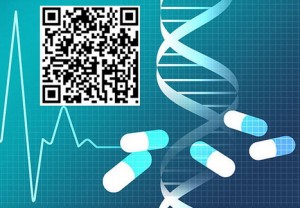 A new method for producing medicine has been developed by researchers from the University of Copenhagen in Denmark and Abo Akademi University in Finland. They can produce a white edible material, on which they can then print a QR code consisting of a medical drug. This could be a solution and a possible replacement to the current method of mass production of medicine. Currently someone with a given illness will get the same product with the equal amount of an active compound as another patient with a less severe illness.
A new method for producing medicine has been developed by researchers from the University of Copenhagen in Denmark and Abo Akademi University in Finland. They can produce a white edible material, on which they can then print a QR code consisting of a medical drug. This could be a solution and a possible replacement to the current method of mass production of medicine. Currently someone with a given illness will get the same product with the equal amount of an active compound as another patient with a less severe illness.
“This technology is promising, because the medical drug can be dosed exactly the way you want it. This gives [us] an opportunity to tailor the medication according to the patient getting it,” said Natalja Genina, an Assistant Professor at the University of Copenhagen.
The shape of a QR code will also enable the storage of data on the medicine itself. According to Genina all that’s required is a quick scan and the information of the given medicine would come up, this could reduce the cases of wrong or fake medication.
“If we are successful with applying this production method to relatively simple printers, then it can enable the innovative production of personalized medicine and the rethinking of the whole supply chain,” said professor Jukka Rantanen from the University of Copenhagen’s Department of Pharmacy.
Currently, researchers are working to refine the methods for this medical production.
Barcode Vs. RFID: Things to Consider Before You Choose
Barcode and RFID labels are choices that enterprises must choose to improve efficiency. Which are the most cost- effective and reliable in the long run for your operation?
Here are a few things you should consider
Barcodes Vs. RFID

RFID labels have electronically generated unique codes and barcodes use standard protocols. In an inventory collection setting, a barcode label can tally up items in the stock according to product type, manufacturer, and stock level. Employees will have to manually check for item specifics such as color, price, and purchase date of individual items. On the other hand, RFID labels are capable of loading up 2,000 proprietary byte of information and be able to tally up individual items in inventory too.
For example: A barcode label would be able to tell a grocer how many gallons Milk A and Milk B was in the cooler but an RFID label will be able to disclose where each gallon of milk came from the farm and distributor.
Ultimately, if printer properly both barcode and RFID tags can eliminate human error and contribute to enterprise efficiency compare to when items are accounted for by hand. Purchasing either barcode or RFID solutions depends on the depth of data required by an enterprise and how the system will be used in the field. Label consumers have to make a decision based on the needs and financial constraints.
If you need guidance on which solution to choose, feel free to contact one of our dedicated account managers and we will be happy to help.
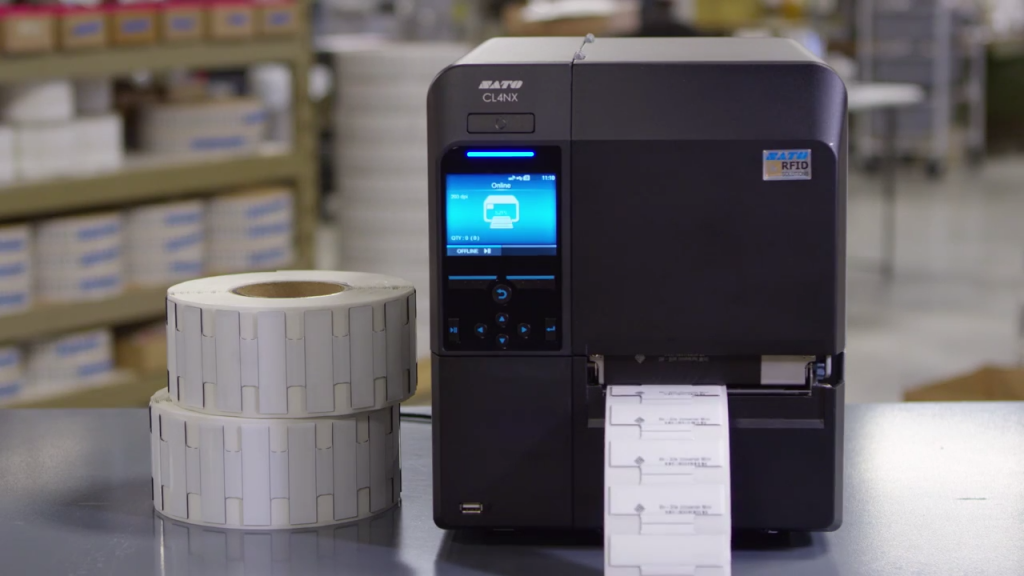
Metalcraft RFID Assest Tags Printed on SATO CL4NX
Internet of Retail
Follow the chain of process of how a pair of shoes enter through the internet of retail. From how a barcode label can help products go through shipping, receiving, product identification, price labeling, re-pricing, support, to loyalty, and self service check out.
It brings values to retailers and customers. For retailers, mobile technology can increase productivity and accuracy of the whole supply chain. For customers, it keeps them more engaged in the whole shopping experience and loyalty card can provide a more personalized experience.
Check out the flow chart below and feel free to contact our dedicated account managers on more info how our products can help you in the Internet of Retail era.
BarTender: Labeling Software for Every Industry and Regulation
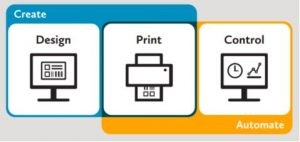 BarTender is a label design and printing software. It is used by companies to create and automate labels, barcodes, RFID tags, plastic cards, and much more. BarTender software by Seagull Scientific offers more than 400 preformatted, ready to use barcode components to create and automate the printing of barcodes. Users can rely on the software to accelerate the speed of goods moving through the supply chain, ensure workers to know how to handle hazardous materials safely, improve retail control of shrinkage and loss prevention and much more. Â
BarTender is a label design and printing software. It is used by companies to create and automate labels, barcodes, RFID tags, plastic cards, and much more. BarTender software by Seagull Scientific offers more than 400 preformatted, ready to use barcode components to create and automate the printing of barcodes. Users can rely on the software to accelerate the speed of goods moving through the supply chain, ensure workers to know how to handle hazardous materials safely, improve retail control of shrinkage and loss prevention and much more. Â
With tools to easily and efficiently design labels and templates, configure and pull from data sources, and launch print commands from any OS or device it can help you keep pace with your growing business. Â
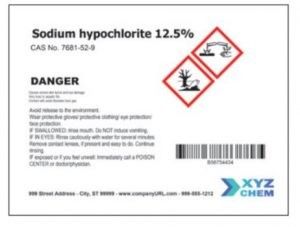 Bartender is used among many industries:Â Â
Bartender is used among many industries:Â Â
- Create labels and barcodes in a retail store Â
- Chemical manufacturers, distributors, and importers use it to meet GHS standards and other labeling requirement.Â
- Food Safety, with labeling laws for food allergensÂ
- In hospitals, labs, and clinics enabling data capture and tracking and more Â
Furthermore, it offers four editions: basic, professional, automation, and enterprise automation to enable you to easily upgrade your system as your business grows without the extra cost and complexity of buying add- on products. Â
Sign up for a free 30-day trial with one of our dedicated account managers to help you find the right edition that fits your needs. Â
Honeywell’s Voyager 1602g: The Powerful Scanning Companion
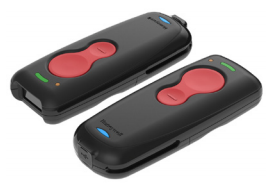 Business is in the palm of your hands when it comes to the Honeywell’s Voyager 1602g. Affordable, yet high performing. The scanner packs high- performance area- imaging technology into small pocketable form factor- making it a powerful tablet scanning companion – based retail point of sale and field service applications.
Business is in the palm of your hands when it comes to the Honeywell’s Voyager 1602g. Affordable, yet high performing. The scanner packs high- performance area- imaging technology into small pocketable form factor- making it a powerful tablet scanning companion – based retail point of sale and field service applications.
Despite its small size, this pocket scanner holds the same high performance area- imaging engine found in our full size handheld scanners- so you can simply scan all the 1D and 2D barcodes. It quickly pairs up with your Apple iOS, Android, Windows mobile device, or a standard PC or laptop and can scan barcodes right off your customers’ mobile phone for revenue- generating mobile marketing initiatives.
The Voyager 1602g pocket scanner is great for a variety of tablet based applications:
- Fixed point-of-sale
- Mobile point-of-sale
- Inventory Management
- Backroom/Stockroom
- In-store customer engagement
- Non-retail scanning applications such as Salesforce automation
Features and Benefits:
- Bluetooth wireless technology
- Enjoy wireless freedom of movement up to 10 meters (33 feet)
- Omnidirectional 1D and 2D barcode scanning options
- Capable of reading barcodes off smartphones.
For any questions or a quote on any of your scanner needs contact us at Barcodes, Inc.
QR Codes to Change the Retail Landscape
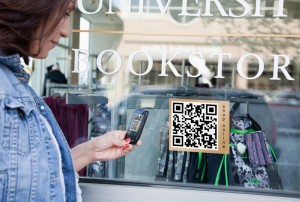 The use of QR codes in the retail industry is expected to increase in the coming years. According to Juniper Research, QR coupons redeemed via a mobile device is expected to reach 5.3 billion by the year 2022. In comparison QR coupons used in 2017 reached about 1.3 billion. That’s an expected 81 percent increase in about 5 years. Target is already on board with QR codes recently announcing a QR code-based payment system that will allow consumers to scan offers directly to their device.
The use of QR codes in the retail industry is expected to increase in the coming years. According to Juniper Research, QR coupons redeemed via a mobile device is expected to reach 5.3 billion by the year 2022. In comparison QR coupons used in 2017 reached about 1.3 billion. That’s an expected 81 percent increase in about 5 years. Target is already on board with QR codes recently announcing a QR code-based payment system that will allow consumers to scan offers directly to their device.
The retail industry stands to gain from the usage of QR codes and there are many ways to incorporate them in the shopping experience.
- QR Coupons
As discussed above QR Coupons are just the start but are still an integral part in incorporating QR codes. Consumers, as one myself, are just trying to find a deal that’ll be easy on the wallet. QR coupons are a great way for consumers to get a deal and an easy way to start for any retail business. There are many ways a business can get started with QR coupons; printing physical QR coupons is one possibility. To do so a barcode printer and barcode software would be needed in order to create and print coupons to hand out to the consumers. Another would be to create QR codes for mobile devices via an email promotion. One thing is certain, a barcode scanner capable of scanning QR codes will be needed to scan any coupons consumers bring in.
- Window Shopping
Using QR codes for window shopping should be taken both literally and figuratively. What I mean by that is, literally putting QR codes on window display products. This would benefit retail stores located in malls as consumers walk by they can scan a QR code associated with a product. Figuratively consumers tend to do a lot of “window shopping†in stores by just looking around. Consumers want as much information as possible about a product before purchasing. Using QR codes in the window shopping fashion could give consumers access to product information with videos and reviews.
- The Shopping Experience
To piggy back off the figurative “window shoppingâ€, QR codes could revolutionize the in-store experience for the consumer. Placing QR codes on the product packaging will allow consumers to learn valuable information about the product. QR codes could contain videos explaining the product to the consumer or it could contain a link leading the consumer to customer reviews. Another possibility would be sampling certain products like music, a consumer could scan the QR code of a CD and listen to track samples. Lastly, consumers could be given the ability to purchase the product directly from the QR code and have the product shipped anywhere.
- Upcoming Sales and New Products
QR codes could help inform consumers of upcoming sales, promotions, or an interactive view of new products arriving to the store in the near future.
- Customer Information
The retail industry can use QR codes to encourage consumers to sign up for their newsletter. Perhaps a sign up feature could be included in the QR code encouraging consumers to sign up with their email address and receive special deals in the future.
Most Consumers now a days have a mobile device on their person. Retailers can use that fact to help improve the consumer experience while at the same time change the retail landscape.
For any questions or a quote on any of your QR code needs contact us at Barcodes, Inc.



